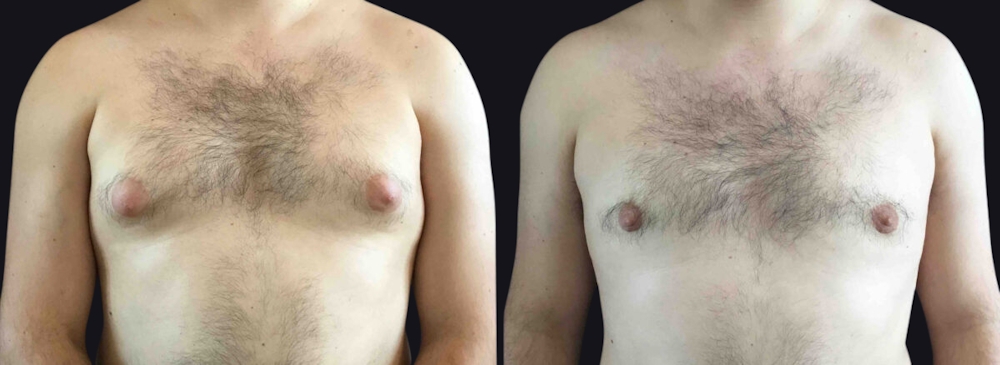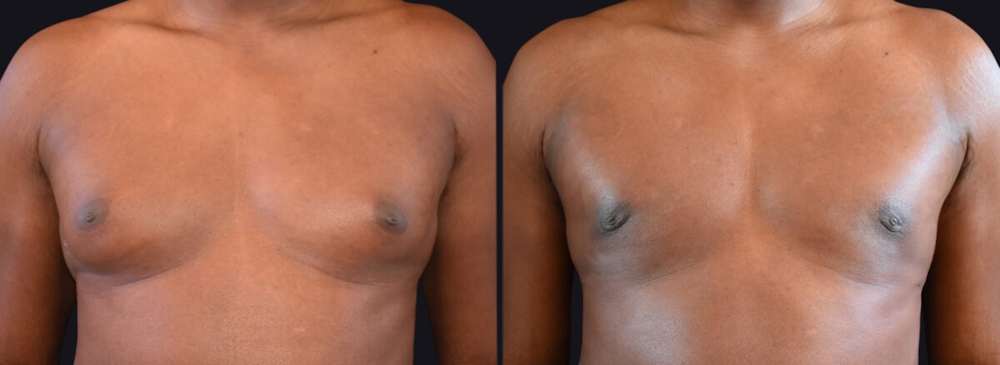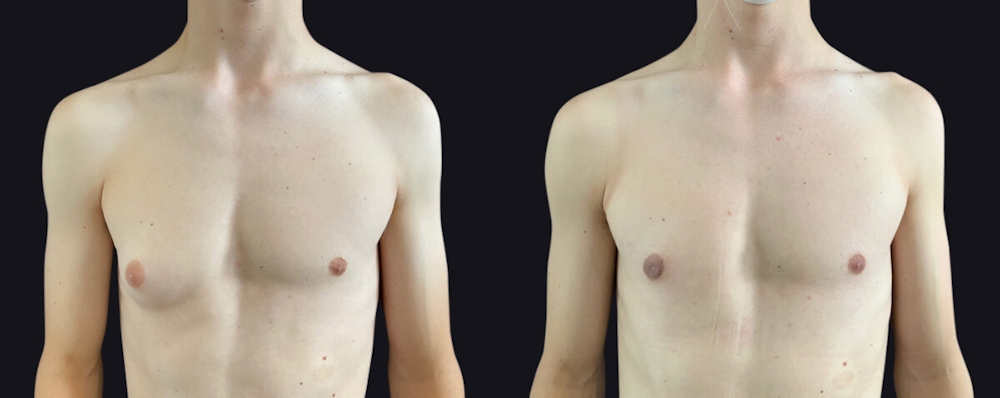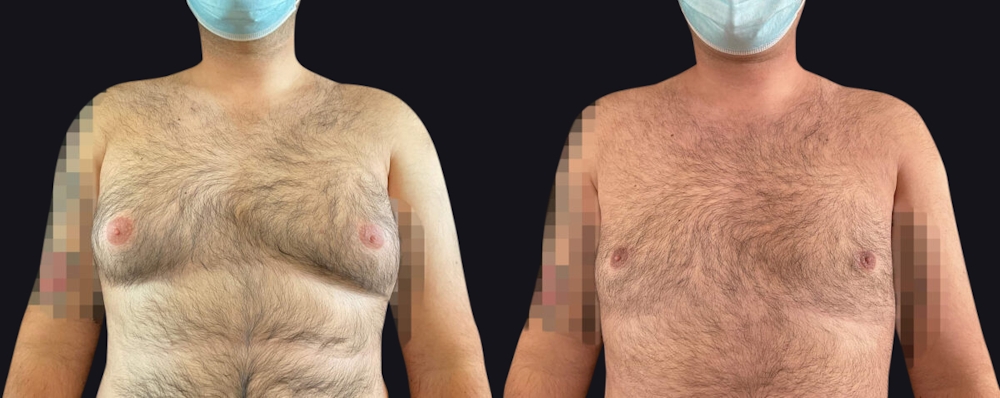What is gynecomastia?
Gynecomastia is a medical condition characterized by the enlargement of male chest tissue. It can result from hormonal imbalances, certain medications, or weight gain and may affect one or both sides of the chest. Most individuals become aware of it during their teenage years. While it may resolve on its own in some cases, surgical intervention may be necessary for those seeking desired results.
Male chest reduction or gynecomastia surgery addresses excess glandular tissue, fat, and skin associated with gynecomastia. This procedure creates a masculine chest appearance by removing excess tissue and tightening the remaining skin.
















